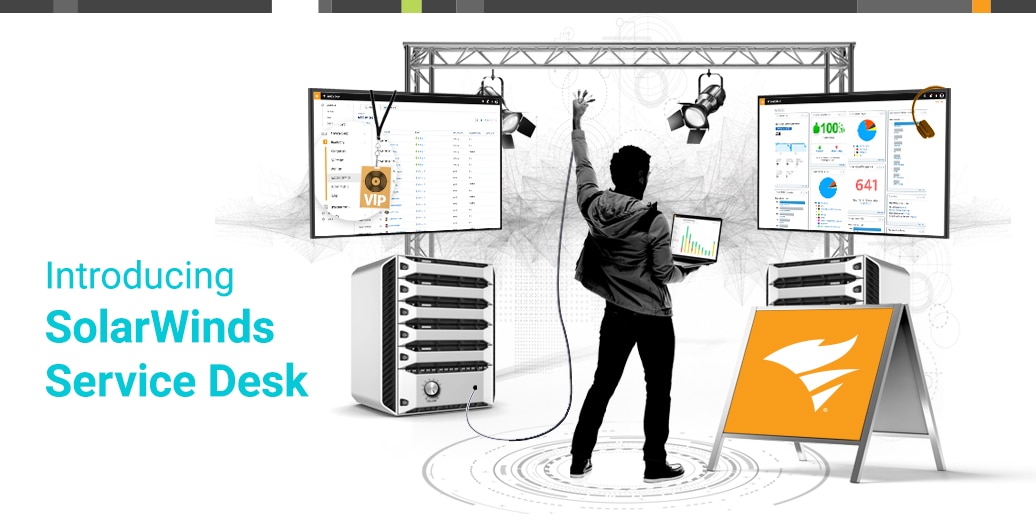One of the greatest challenges for IT departments in the age of digital transformation is consolidating data and creating opportunities for different systems to work together toward common goals. Technology integrations are a key piece of streamlining processes, and that’s especially true in the
IT service desk.
Service desk integrations are important for a few different reasons. They help to collect data upfront, create a standard for repetitive tasks, streamline communication, connect to other systems and communication applications, and resolve incidents and requests faster. This can all contribute to a
positive employee experience.
In this blog, we’ll focus on the following areas for integrations:
- User provisioning and single sign-on (SSO)
- Process integrations within the service catalog
- Aligning remote support sessions with incident reports
- Connecting IT operations to the Service Desk
Of course, there are myriad possibilities to integrate IT and business applications into the service desk, and every organization’s needs are unique. But these four areas are beneficial to almost any type of organization.
User Provisioning and Single Sign-On
This is an important part of your service desk because it bridges user attributes from your Active Directory (AD) into your service platform. It helps to understand employees and how they fit into the organization. It provides key identifiers like where they’re located, what department they’re in, who do they report to, and so on. Having a way to automate provisioning and deprovisioning of users means user management is handled where it’s best suited (AD)—and that your service desk has the most up-to-date user base.
Additionally, many IDaaS providers, like
OneLogin,
Idaptive,
Okta, and
Microsoft Azure, also offer Single Sign-On (SSO). This helps your employees easily access multiple platforms, alleviating their need to memorize passwords for each. Making user access easier helps fuel traffic and adoption to the service desk—a win-win for everyone.
IDaaS platforms also offer useful data the service desk can leverage to automate processes.
A great way to look at this is bringing in a new hire. A modern service desk with a robust workflow engine makes it easy for managers to submit a new hire request that kicks off an onboarding workflow with all the required basic information filled out. You can connect the user data from your IDaaS solution to the service desk to automate approvals.
Instead of having to build out an approval for
all managers, you could simply use an identifier like “requester’s manager” and it’ll automatically kick the task to the appropriate person. By streamlining the onboarding process, you’re able to ensure the new hire has what they need on their first day.
Process Integrations within the Service Catalog
A service catalog built into your service desk enables you to build unique workflows, tasks, and approvals. It can also connect IT to other business-critical applications, which helps automate processes. Process integrations leveraging an API can be nested into your defined workflows. Implementing process integrations helps alleviate some of the human input, automating exchanges of data with the use of API calls.
Consider new hardware purchases. A modern service desk paired with an up-to-date user directory can make it easy to automate manager approvals. Rather than asking the requester to define who they report to, the approval within your
service catalog can look at the attribute of “incident requester's manager.” This helps teams to work smarter, not harder...and alleviates ongoing maintenance to the process. It just requires your AD is reflective of the right managers.
And remember when I said the service desk can be connected with other communication tools? Say your company uses
Slack. You can connect your service desk to Slack with an API call, using the process integration. This makes setting up an automated company-wide message to announce the new hire a breeze. Just sit back and watch the emoji reactions pour in.
Aligning Remote Support Sessions with Incident Reports
A recent study from
CNBC said at least 70% of employees worked remotely at least once a week. No matter what your company policy for working remotely is, if there are several locations throughout the world or just one office, employees will likely work remotely at some point.
Your service desk should be able to restore services quickly, prevent future issues from occurring, and work through the problem management process efficiently. Whether you use a remote tool like
LogMeIn Central,
Dameware Remote Everywhere, or something else, remote access to employees’ assets can often be the fastest way to resolve issues.
Having remote support directly integrated with your service desk puts technicians on the frontline, letting employees know they can get the help they need whenever and wherever an issue arises. It only takes a few clicks to initiate a new remote session directly from the ticket, but it pays dividends knowing you can quickly access a remote employees’ device to get them back up and running.
Connecting IT Operations with the Service Desk
Two main functions of
IT operations are monitoring and delivering services. Let’s compare the monitoring function to an alarm system. An alarm system’s primary function is to pick up on anything unwarranted.
In terms of an issue within the service desk, that monitoring alert can detect a potential outage that may affect employees. This makes it easier to route, diagnose, escalate, and resolve performance issues in a more seamless fashion. Service desk integrations with IT operations tools will give you a more proactive approach to many of these issues. The faster an issue is identified, built into the service delivery processes, or escalated if necessary, the faster your teams can react to these events in your technology environments. Service desk integrations with IT operations tools will give you a more proactive approach to many of these issues.
Within the service desk, you can select what types of alerts are important to your broader IT service team. These alerts can automatically trigger an incident within the service desk. Once created, you can use routing rules to ensure the right team of technicians gets notified when events or performance issues arise. From here, teams can follow
ITIL practices to connect all related incidents to a problem, and work everything at once. Integration events and alerts introduce a new layer of visibility from your operations side of the house to your service desk. It makes operations' alerts actionable—and gives you the chance to affiliate impacted assets to these alerts, resolve issues before employees are impacted further, or even develop change documentation for recurring events.
Curious what these integrations look like in practice? Check out our
on-demand demo to see them in action with SolarWinds
® Service Desk.








